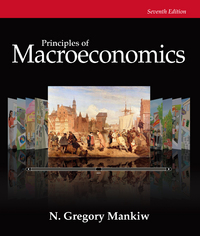Question
Re-Word written assignment. Week 5 Written Assignment A demand curve is a graph that illustrates the connection between a commodity or service's cost and the
Re-Word written assignment.
Week 5 Written Assignment
A demand curve is a graph that illustrates the connection between a commodity or service's cost and the desired volume over a predetermined period. The demand curve is shown as a downward-sloping line on a graph where the price is on the vertical axis and quantity is on the horizontal axis (Kerin & Hartley, 2023). One role of the demand curve is to help decide the best price. The demand curve assists organizations in determining the amount at which they may generate the most profit (Czinkota et al., 2021). Moreover, it allows corporations to use pricing discrimination practices. Price discrimination entails setting different rates for various client segments based on their financial capabilities. Price elasticity of demand relates to how responsive demand for a product or service is to price fluxes. Comprehending the price elasticity of demand is very important for a leader who must make pricing decisions as it offers insightful info on how pricing adjustments would impact demand and, subsequently, revenue (Kerin & Hartley, 2023). For instance, a manager can use price elasticity of demand to evaluate the understanding of consumers of changes in product costs. Additionally, a manager can choose pricing strategies after appraising the demand for their commodities or service and their price elasticity. There are many regulations and principal laws that impact specific pricing strategies. One of them is a price-fixing law. These laws forbid rival contracts rivals to fix prices or participate in anti-competitive behavior (Mandal, 2019). Another law that affects pricing strategies is the price extorting law. This law forbids businesses from increasing the cost of commodities excessively during crises. These laws protect customers from unfair sales when the supply and demand are low (Mandal, 2019). On the other hand, minimum charge laws are rules that set a minimum price for particular services or commodities. Other principal laws and regulations include price discrimination acts, deceiving pricing rules, and antitrust regulations that control rivalry and anti-competitive practices. Odd-even pricing is a marketing approach where product costs are predetermined to be lower values that end with odd numbers or a more excellent value that ends, with an even number with the former looking more appealing to shoppers. Businesses and firms typically use standard markup pricing as a pricing technique to establish the selling price of a commodity or service. To set the ultimate price at which the manufactured goods will be sold, one should add a fixed percentage or amount to the cost of making or obtaining the product (Czinkota et al., 2021). This technique is usually used in retail and wholesale industries where the price of commodities is an essential factor. It is also easy to calculate. Loss-leader pricing aims to promote sales of a specific product by luring buyers into the store or offering it at a price below its cost or market worth. Retail firms do this intentionally, making fewer profits or sometimes even being at a loss to stimulate the buyers' interest and make extra sales (Florez-Acosta & Herrera-Araujo, 2020). This is also a competitive strategy for retail firms and a way of promoting new goods. A fixed price policy is strategy enterprises use to decide on a fixed price for a commodity or service for a given time. With this approach, the price is fixed regardless of market circumstances, such as variations in supply, demand, or competition (Kerin & Hartley, 2023). A fixed price policy aims to give consumers stability and certainty while ensuring constant pricing across various marketplaces or purchaser segments. A marketing channel of distribution is a term used to describe the process by which products and services are moved from a manufacturer to a consumer. Moving final products from the manufacturers to consumers entails several intermediates who simplify the movement of products and services (Kerin & Hartley, 2023). Intermediaries are essential when moving goods because they make distribution easy and efficient. Moreover, intermediaries help in risk moderation as they assume certain risks associated with distribution, such as market changes.
References Czinkota, M. R., Kotabe, M., Vrontis, D., & Shams, S. R. (2021). Marketing Management: Past, Present and Future (4th ed.). Springer. Florez-Acosta, J., & Herrera-Araujo, D. (2020). Multiproduct Retailing and Consumer Shopping Behavior: The Role of Shopping Costs. International Journal of Industrial Organization, 68, 102560. https://www.sciencedirect.com/science/article/abs/pii/S0167718719300888 Kerin, R. A., & Hartley, S. W. (2023). Marketing (16th ed.). McGraw Hill. Mandal, P. C. (2019). Public Policy Issues in Pricing: Strategies and Initiatives. International Journal of Applied Management Theory and Research (IJAMTR), 1(2), 17-30. https://www.researchgate.net/publication/334147761_Public_Policy_Issues_in_Pricing_Strategies_and_Initiatives
Step by Step Solution
There are 3 Steps involved in it
Step: 1

Get Instant Access to Expert-Tailored Solutions
See step-by-step solutions with expert insights and AI powered tools for academic success
Step: 2

Step: 3

Ace Your Homework with AI
Get the answers you need in no time with our AI-driven, step-by-step assistance
Get Started


